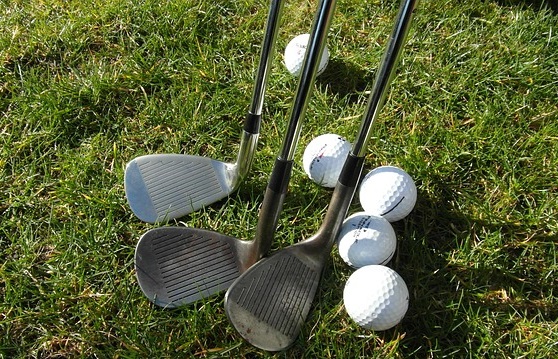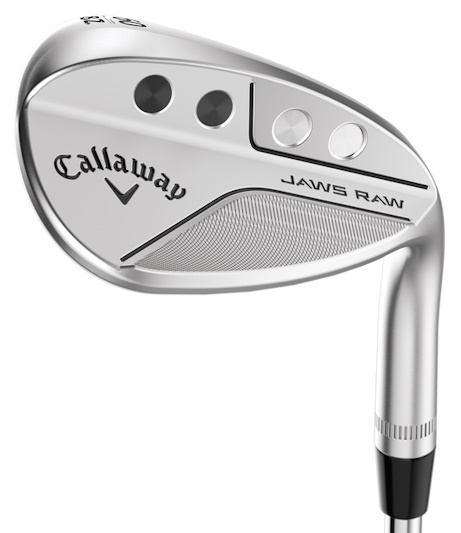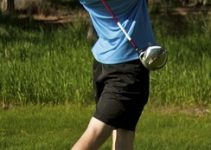Golfstead is reader-supported. When you buy through links on the site, we may earn an affiliate commission at no extra cost to you. Our affiliations include, but are not limited to, the eBay Partner Network and Amazon Associates.

You will inevitably find yourself in situations out on the golf course when:
- you’re greenside (maybe in the rough or a closely mown area)
- the pin is a few paces from the edge of the green giving you little green to work with
- there is a bunker or some thick rough between you and the pin
In these situations, it’s probably best to hit some type of flop shot.
There’s no doubt that the flop is a great shot to have in your repertoire; not only does it look impressive, but it will also help you shoot lower scores, and that’s the ultimate goal, isn’t it?
This article aims to put you on the path to flop shot mastery.
What is a flop shot?
A flop shot is a short, high-trajectory shot (typically no more than 50 yards) that lands softly with minimal roll.
The goal with these shots is usually to fly certain obstacles and stop the ball within a few feet from the pin, or shoot past the pin and have the ball spin back.
In general, a flop shot is achieved when an open clubface (or a clubface with an extreme amount of loft) slides underneath the ball, quickly launching it on a high trajectory.
Many amateur golfers shy away from this shot because they either don’t know how to hit it or think it’s too difficult. The truth is that if you know the proper technique and put in a little bit of practice, you can hit flop shots consistently and reliably.
Can you hit flop shots from any lie?

Flop shots can be hit on any length of grass, but the shorter the grass, the more difficult the shot is to hit. An exception to this is when the ball is buried in long grass, in which case it’s likely that your only option is to hack it out.
For example, hitting flop shots from the fairway or fringe is quite a bit more difficult than hitting from a fluffy lie in the rough.
This is because, from short grass, it’s more difficult to get the club underneath the ball, and hence you’re more likely to blade or thin it.
If your situation calls for a flop, you first need to assess your lie and determine if you’ll be able to get the club underneath the ball. Knowing this all comes down to experience.
If the ball is sitting up or the lie is too fluffy, be careful not to slide the club too far underneath or you may end up whiffing it or barely making any contact. Practice, though, and you should get the correct feel for it.
How To Hit A Flop
I recommend taking your most-lofted club (a sand wedge or a lob wedge) for the shot.
Depending on the trajectory you envision for the shot, you can open or close your clubface and stance accordingly.
The more you open the clubface, the higher and shorter the flop will be. However, opening the clubface will also typically mean that you need to aim more to the left (for a right-handed golfer) to keep the shot on the intended line.
It’s also a good idea to widen your stance, with your feet more than shoulder width apart. This achieves a number of things:
- it supports a full swing which generates the speed needed for a flop
- it helps keep your lower body quiet during the swing
- it helps naturally open the clubface because the shaft is closer to the ground
Remember to re-grip your club after opening the face and adjusting your alignment. Also start with playing your ball slightly forward of center.
There is no hard and fast rule regarding ball position, and depending on your individual swing, you might have more success with a different ball position. Of course, the best thing to do is try it out and see what works for you.
The weight distribution for the flop differs based on whether you’re facing a tight lie or a fluffy lie. I’ll begin with the fluffy lie:
Fluffy Lie (Rough)
For this lie, it’s important to keep your weight level (or centered) during the swing.
This shallows out the bottom of your swing arc and prevents the club from going too far underneath the ball, which will send it nowhere.
Tight Lie (Fringe, Fairway)
For this lie, you should put your weight forward on the downswing.
This allows you to drive the club underneath the ball and it prevents the bounce of the club from taking the leading edge off the ground through impact, resulting in a bladed shot.
Additional Tips
- focus on accelerating your club and arm together through impact. Accelerating through the ball will allow the leading edge to quickly slide underneath the ball before the bounce of the club has a chance to lift it off the ground.
- to avoid “flipping your wrists” through the shot, keep your hands slightly forward, lead the shot with your hands, and finish high.
- if you want more spin on your shot, you need to come into the ball at a steeper angle, and to do this you can either put your weight more forward or put the ball farther back in your stance.
- don’t shorten your swing. Make a full swing as if you were hitting a full iron shot; this will help you generate sufficient speed to get the club underneath the ball.
If you haven’t seen the video below of Phil Mickelson demonstrating the flop shot, it’s definitely worth checking out.
What equipment is best for the job?
For the purpose of hitting a flop shot, you generally want to use a wedge with a low enough bounce that you can slip the leading edge underneath the ball, but not excessively low to the point where you’re consistently digging it into the ground.
Ultimately, the best wedge or iron to use for a flop shot depends on the lie. For fluffy lies in the rough, you can safely use a wedge with a high bounce of 10°-13° as there is a much lower risk of blading the shot.
Conversely, for tight lies, you should use a low bounce wedge (4°-6°) so that you’ll still be able to get the leading edge under the ball when you open the clubface (opening the face increases the bounce).
It’s also worth considering the grind of a wedge when hitting flop shots. If you have a naturally steep swing, you’ll want to look for a wider sole with more camber as this will help prevent unwanted digging.
What I recommend doing is choosing a high-lofted wedge (aim for 60°) from a model like the Callaway JAWS RAW Full Face and testing different bounce configurations to see which one gives you the most success.
Conclusion
Hitting a flop shot can be tricky if you’re a weekend hacker or high handicapper, and even scratch and pro golfers mess it up at times. Indeed, it’s one of the riskiest shots in golf, but also one of the most rewarding if done successfully.
With a sound technique and enough practice, you should be able to pull off the flop shot with solid consistency.
If you want more than just general tips and guidance for hitting a flop shot, check this out. This will help you develop the ideal golf body in six weeks and improve every aspect of your game including flop shots:
Are you struggling with flop shots, or are you just starting out trying to hit them? Feel free to share your story and experiences in the comments below.





Interesting page on flopping. As an amateur golfer, I learned my swing using a pitching wedge-getting high loft, short distance, and straight. Never thought to use that simple technique to get through hazards–usually worked to go around.
Another helpful point was aiming “under” the ball during those tough lies. Need to practice this shot to get an understanding of how not to flip my wrists.
The video was a great help understanding the mechanics.
Thanks
Thanks Brian. Swinging shorter to start, and then building up to longer swings (and clubs) is actually something I advocate. Good approach there. And yes, it’s crucial that you do not flip your wrists through the shot when the margin of error is so small.
good article about the flop shot. You are right , it is individual.For example from a tight lie if I put too much weight on the left side then I hit it fat and the ball goes nowhere the same if I ise too much the wrists.The best for me it is to have a shallow angle of attack and to achieve this I keep the ball a bit more far from me than usual and close to the left heel.
Nice. Always good to hear how people pull it off.